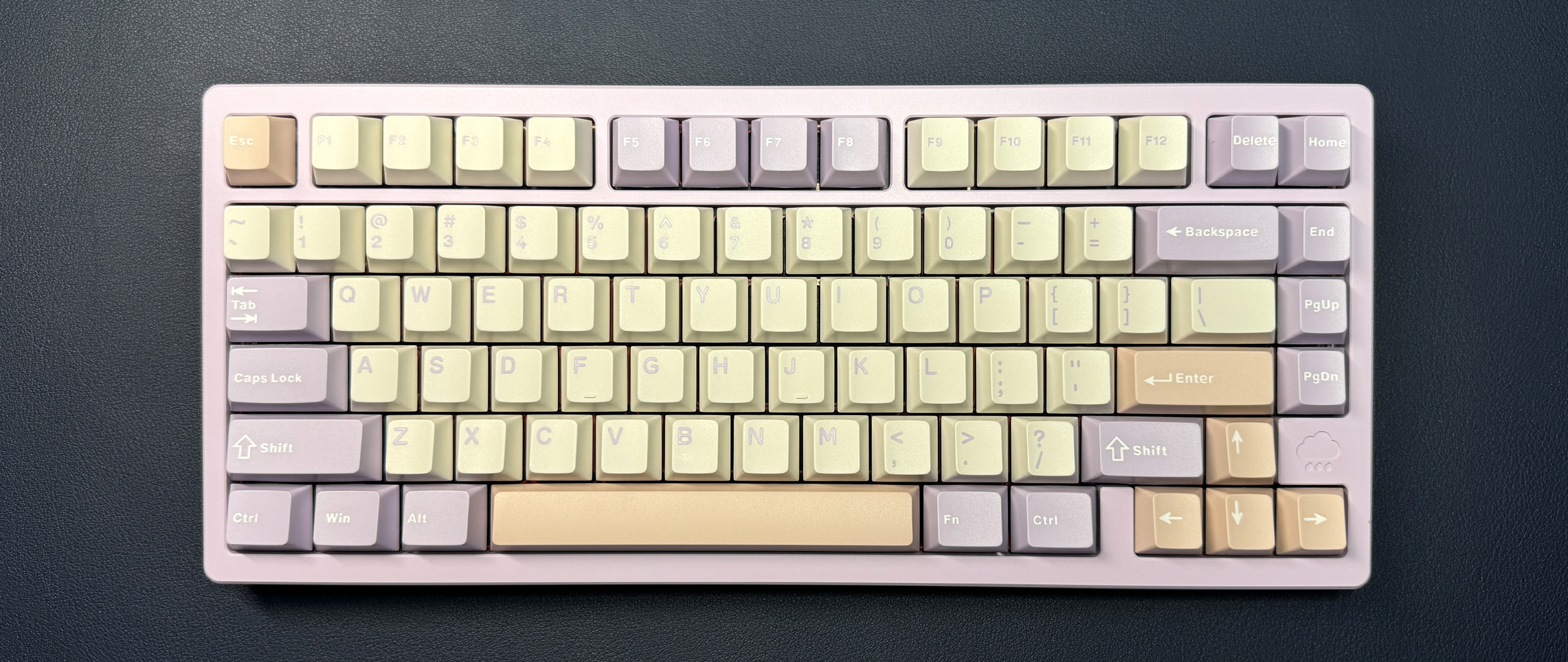Tom's Hardware Verdict
The Rainy 75 Pro is a great-sounding keyboard with some minor issues at a great price point.
Pros
- +
Sounds amazing
- +
Nice build
- +
Budget-friendly
Cons
- -
Wireless switch is under Caps Lock key
- -
Only linear switch options
- -
Some double-typing issues
Why you can trust Tom's Hardware
If you're looking for a keyboard that feels and sounds amazing — even if you don't really know what "feels and sounds amazing" means in a keyboard, Wobkey's Rainy 75 Pro is a pretty solid bet. While it's not the absolute best keyboard on the market, it's definitely one of the best mechanical keyboards you can get today.
The Rainy 75 Pro is a great-sounding (and feeling) keyboard for a surprisingly budget-friendly price of just $139 — and that's for the Pro version. You can also pick up the Rainy 75 in a Lite version, for $99, and a Standard version ($109). The Pro version has a bigger battery, a heftier build, and a FR4 switch plate, as well as different switches (Kailh Cocoa linear switches vs. HMX Violet linear switches).
Design and Construction of the Rainy 75 Pro
The Rainy 75 Pro is a pre-built gasket-mounted mechanical keyboard with a 75-percent layout. It has 81 keys, including a full function row, arrow keys, and five control keys (Delete, Home, End, PgUp, and PgDn). The keyboard comes in three variations — Lite (wired connectivity only), Standard (wireless with a 3,500 mAh battery), and Pro (wireless with a 7,000 mAh battery). Each variation comes in multiple colors, including black, silver, and white, as well as blue, pink, purple, yellow, and red (all colors are not available in all variations). For this review, we're looking at the Rainy 75 Pro in Electro Purple with Kailh Cocoa switches.
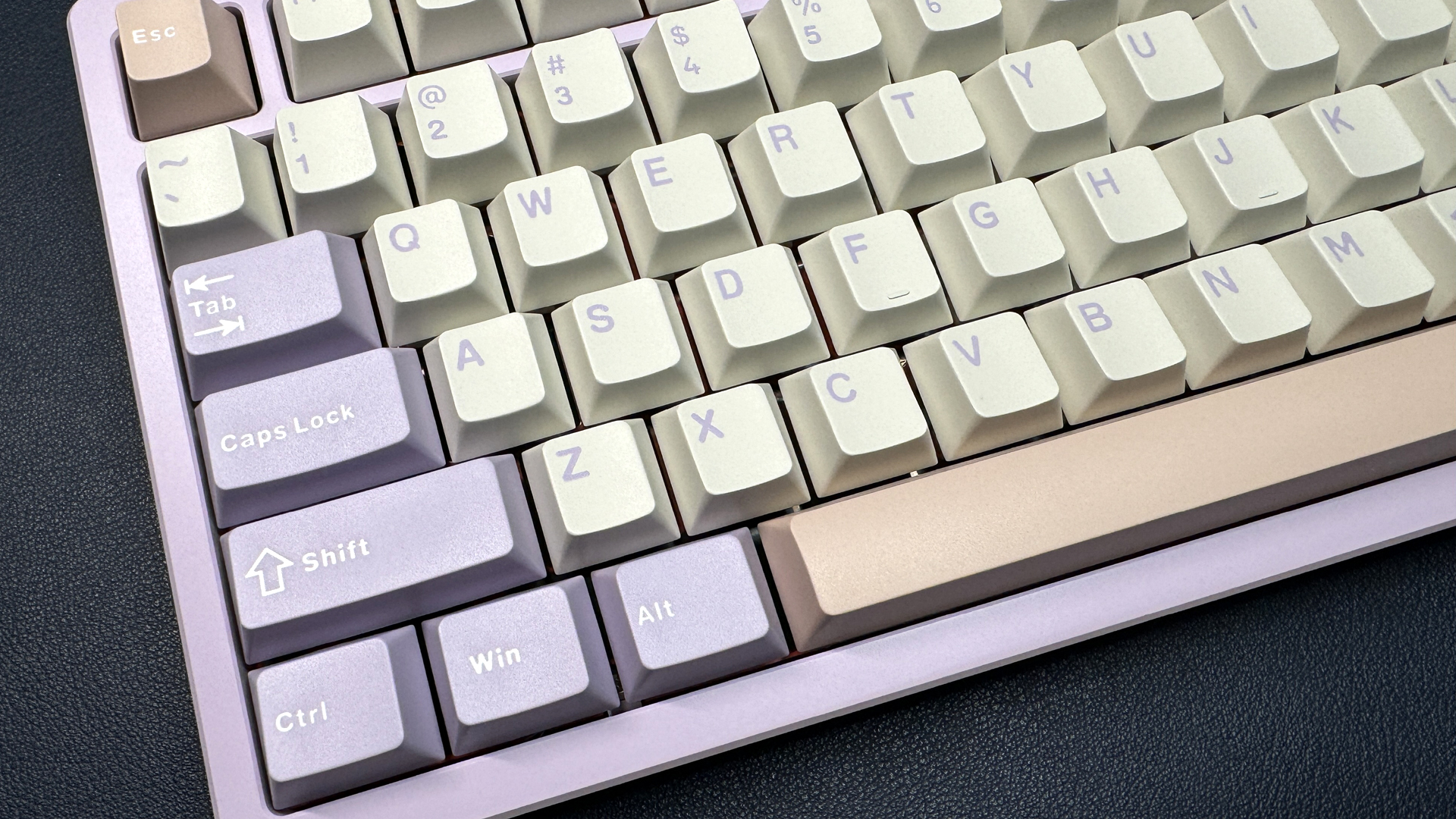
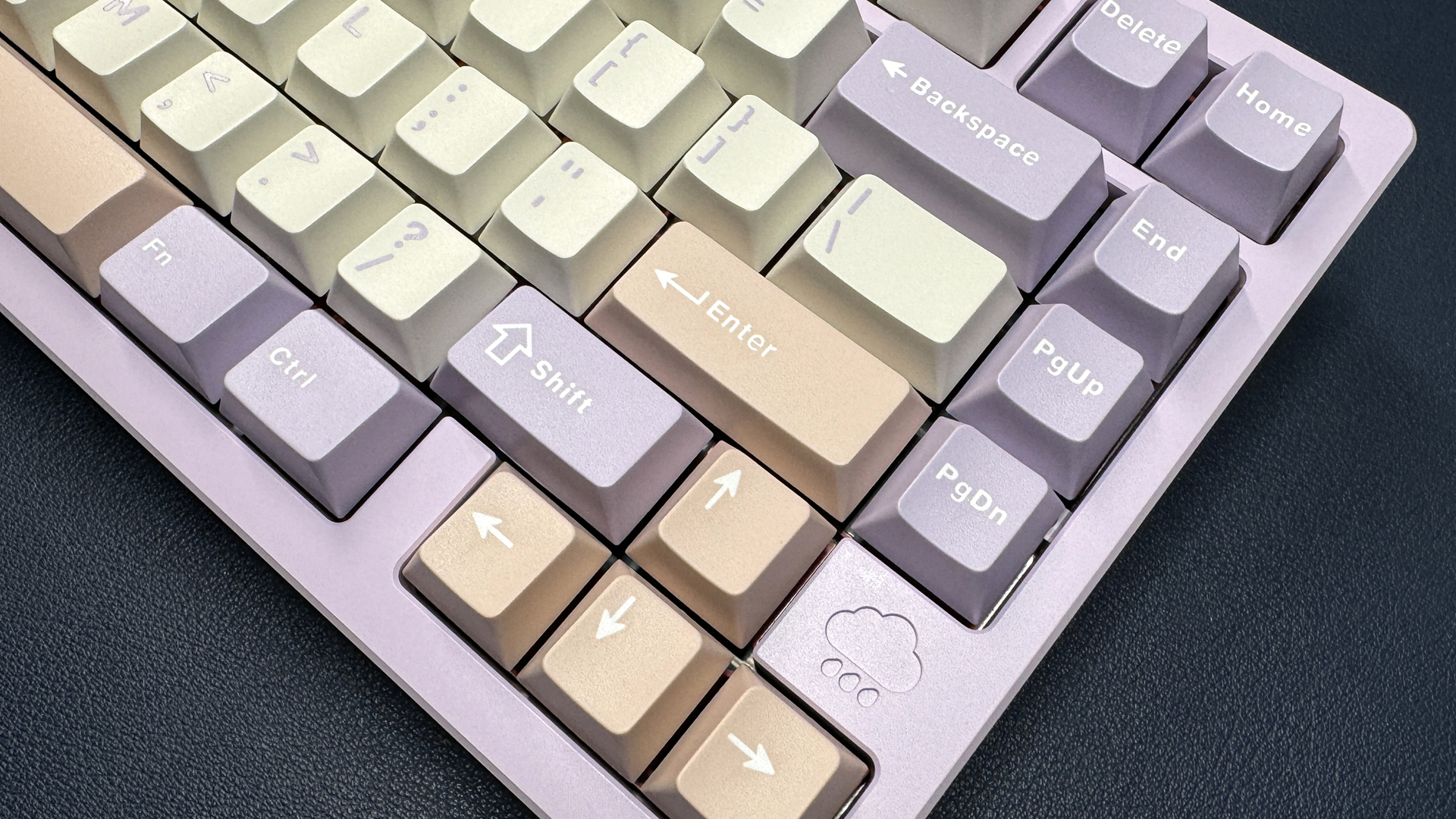
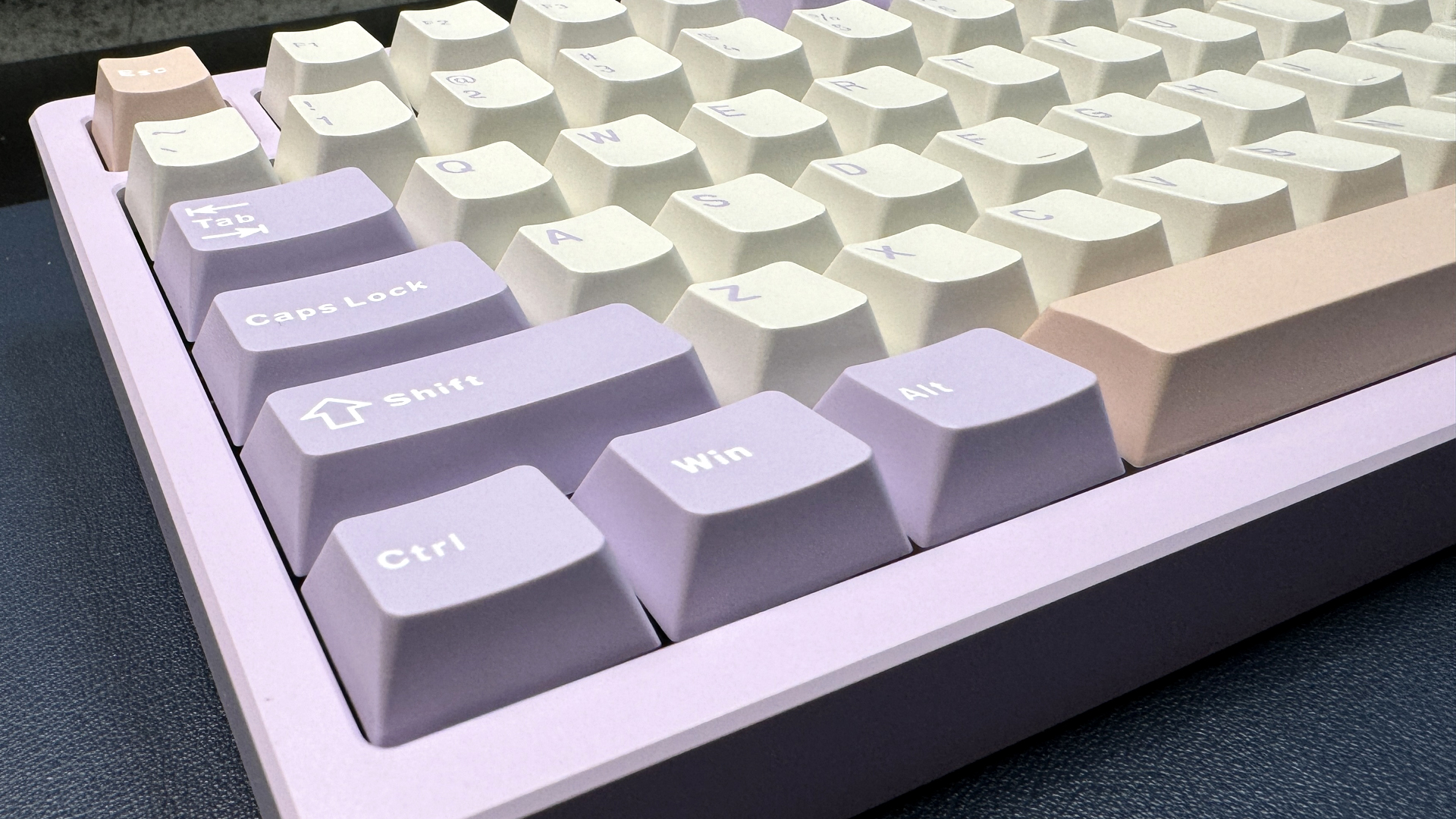
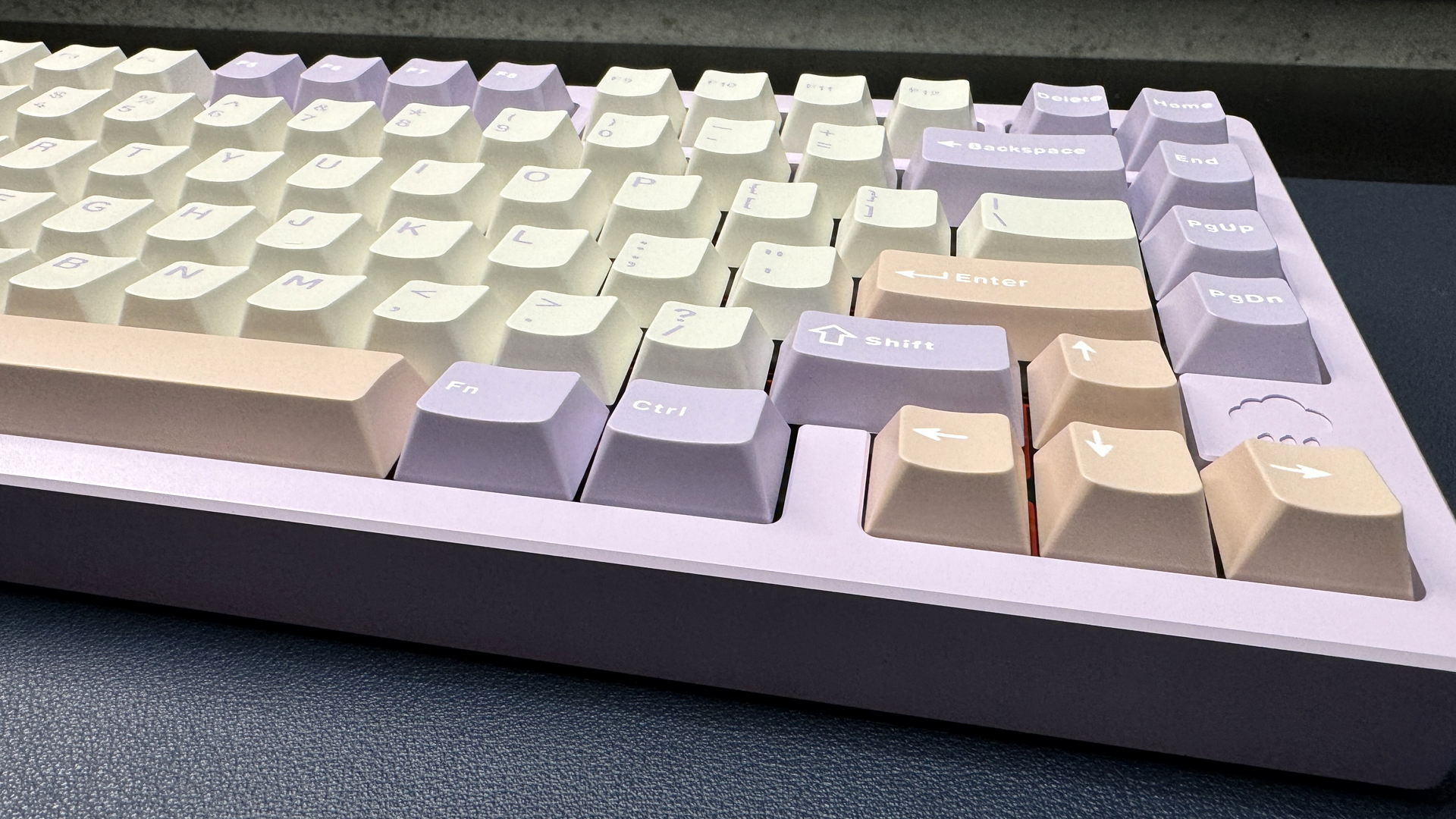
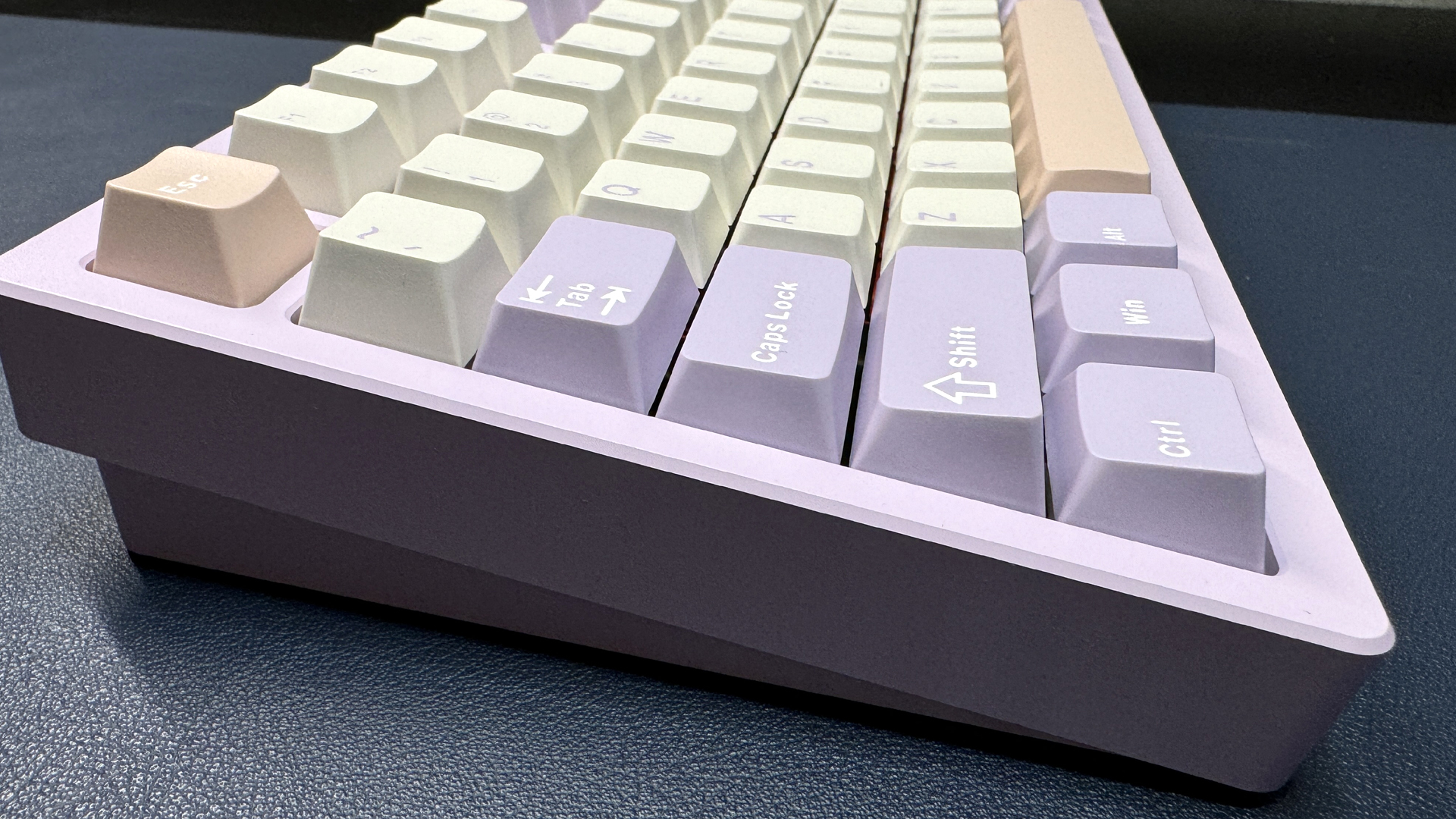
The Rainy 75 Pro is a well-built keyboard with a hefty aluminum case — our review unit weighed in at 4.37 pounds (1980.5g), which is just a little heavier than the 4.28-pound (1941.5g) Meletrix Boog75. Both the top and bottom case are aluminum with a smooth, matte finish. The keyboard comes with durable, non-shinethrough double-shot PBT keycaps with accent keys in matching colors. They have a smooth, matte finish, neatly-printed legends, and a Cherry profile — lower profile than traditional OEM keycaps, with very lightly curved tops and sculpted rows.
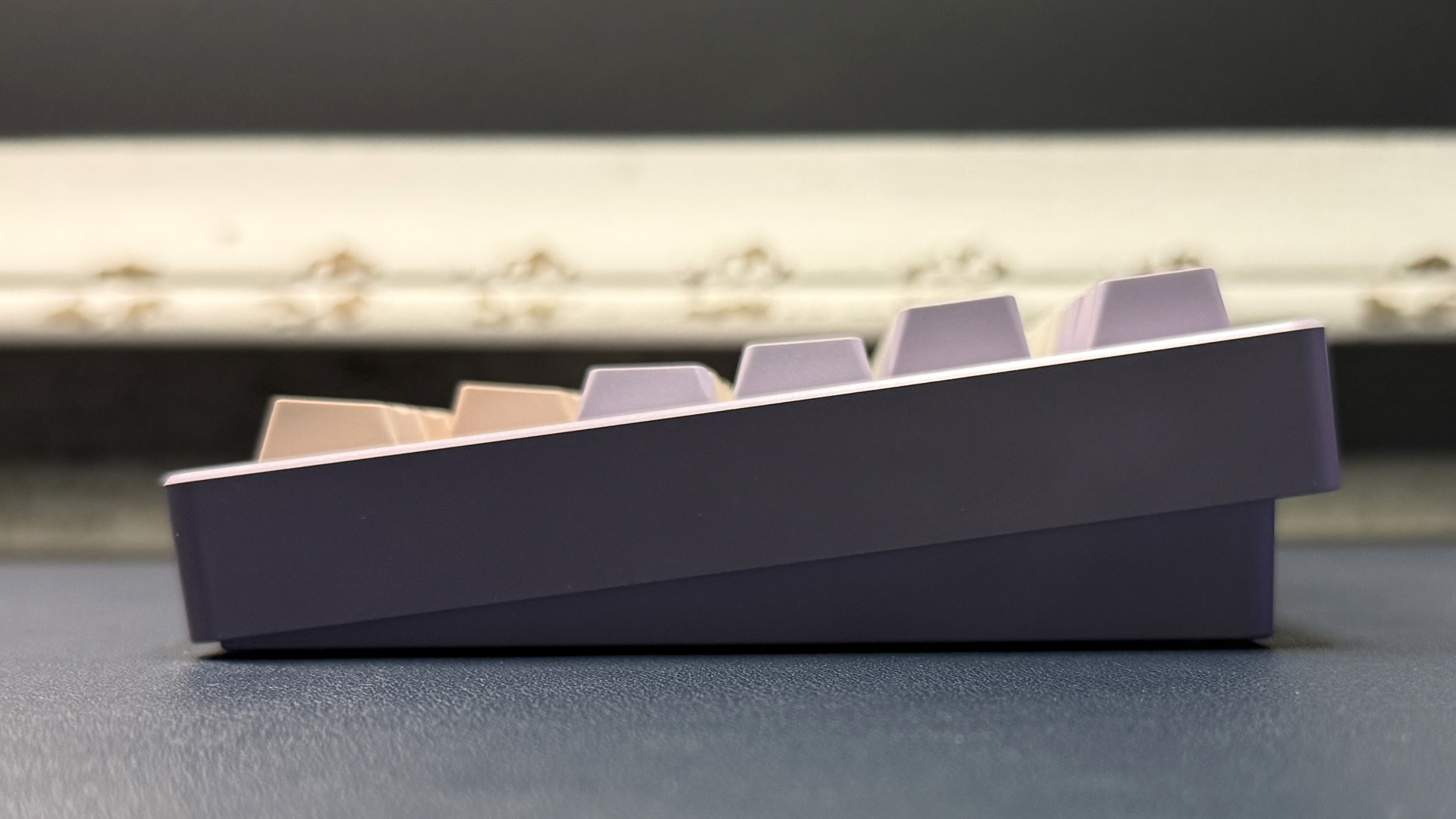
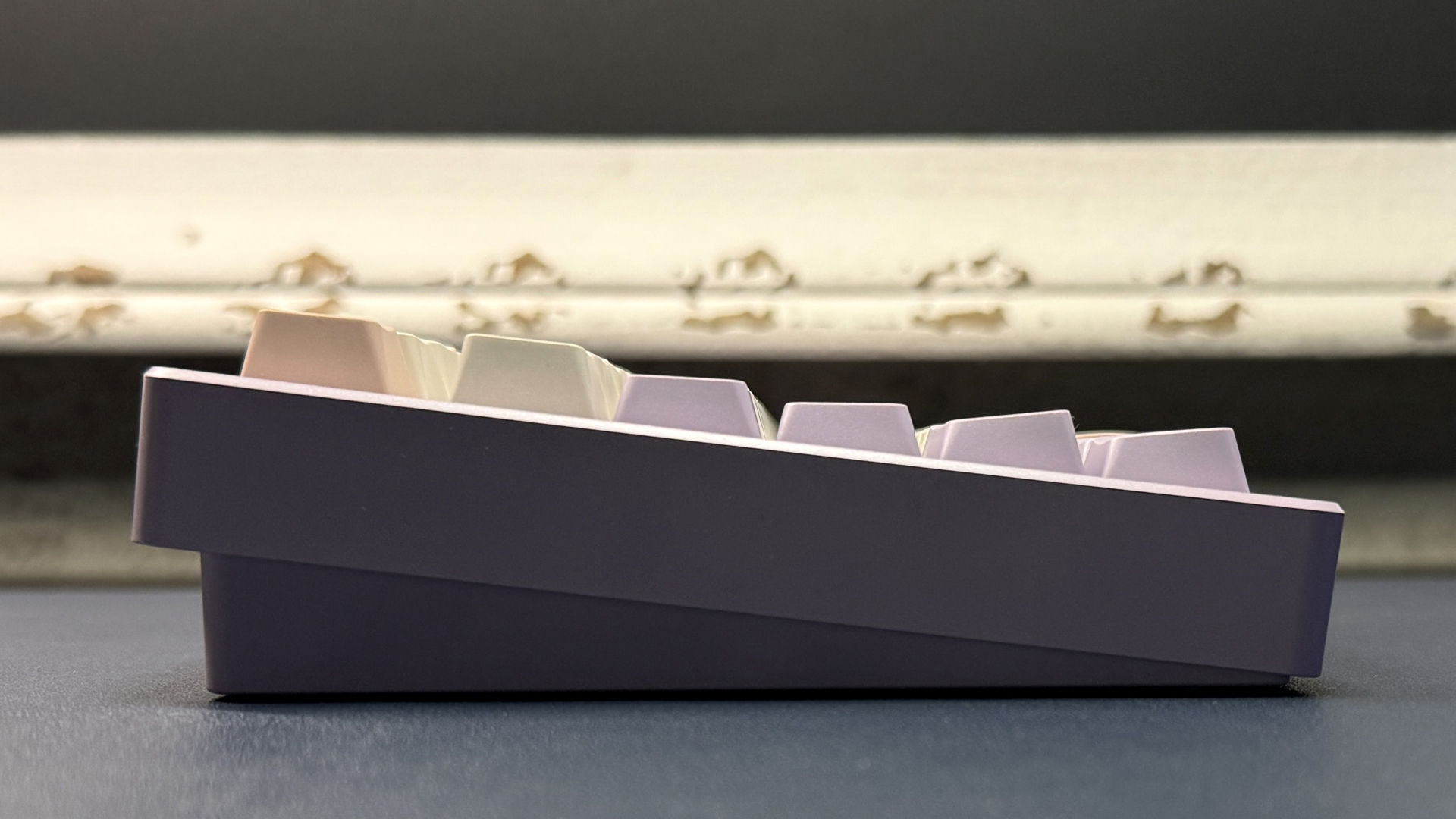
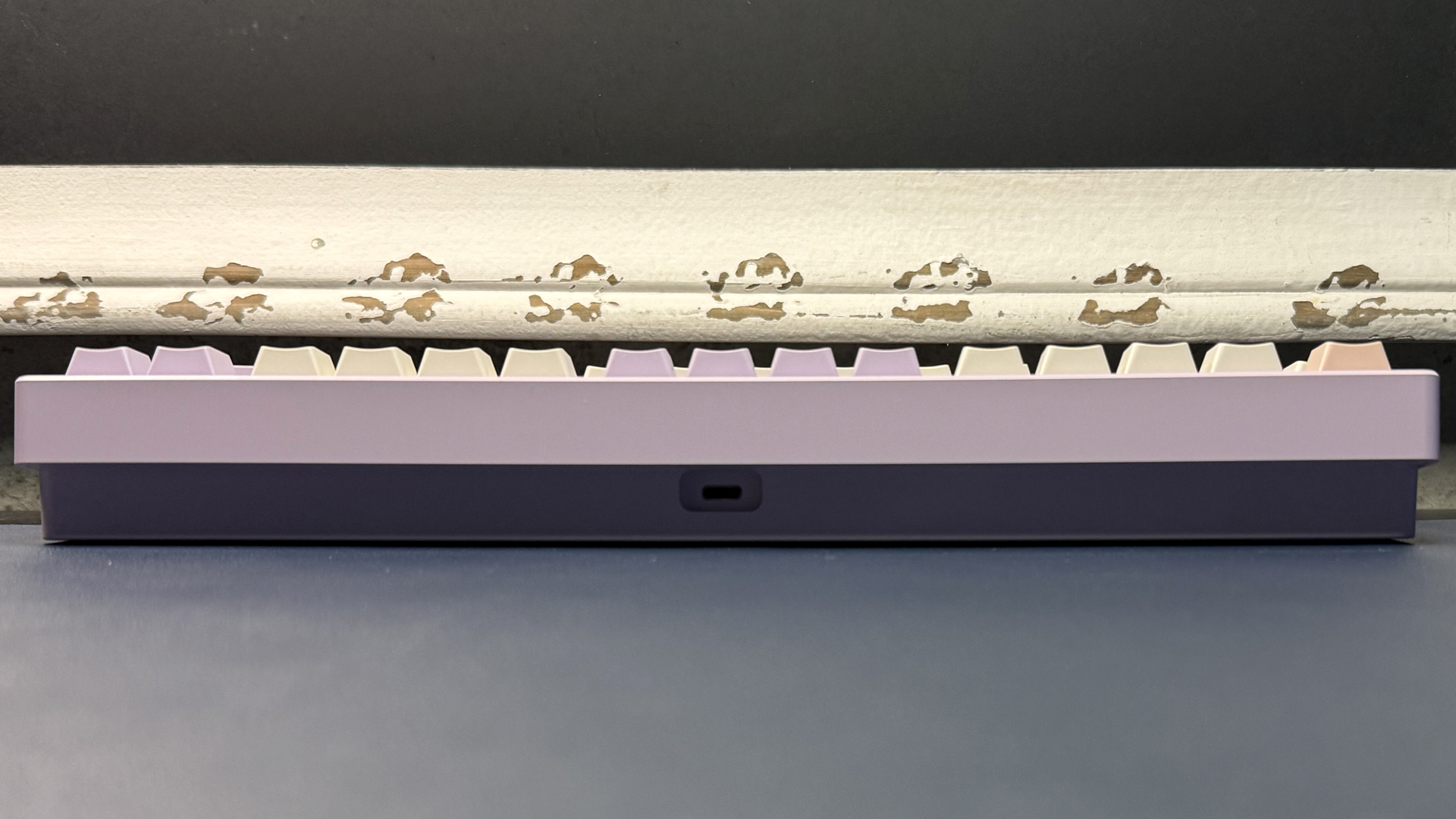
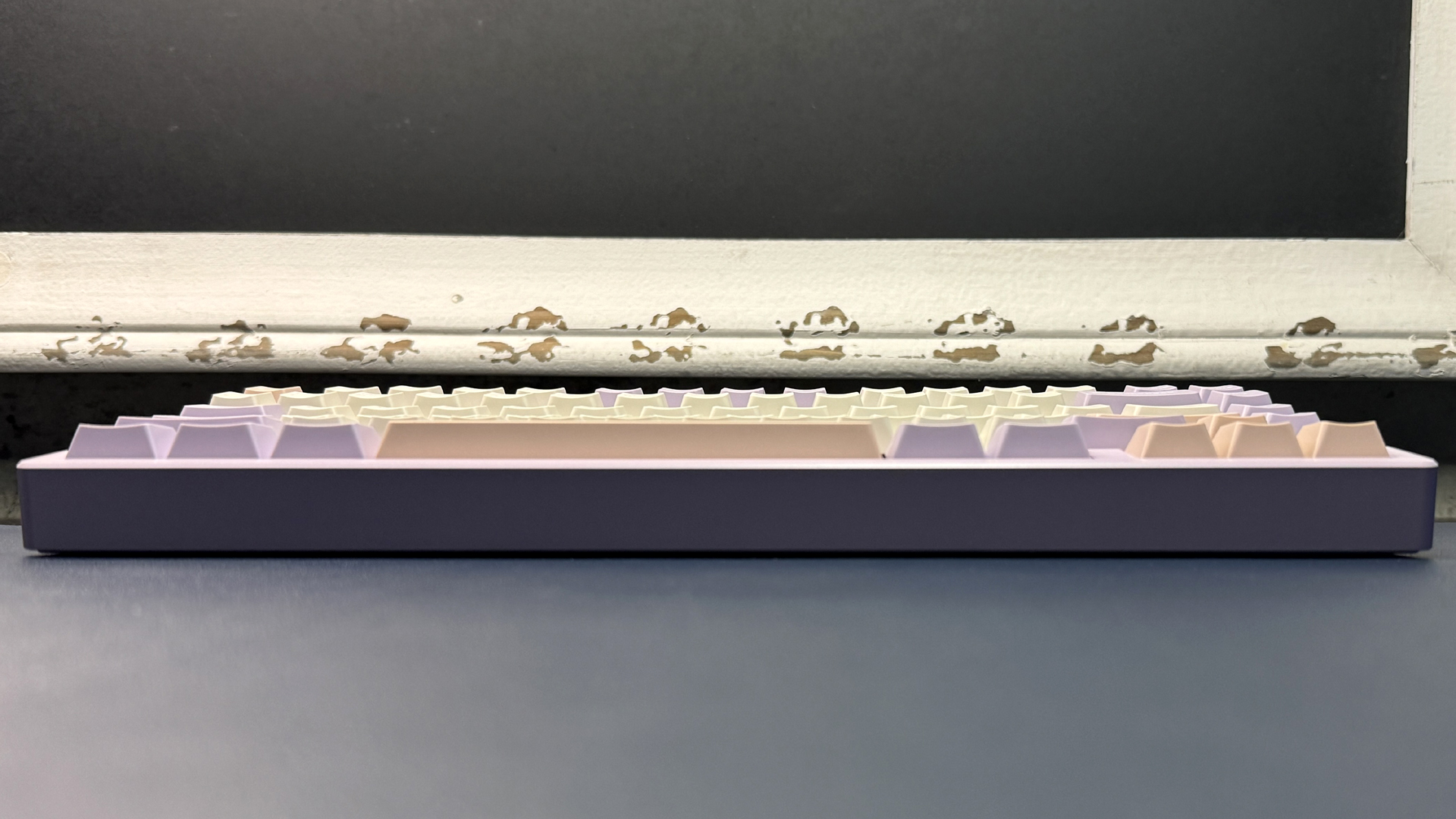
The Rainy 75 has a 75-percent layout, which is a more compact version of the popular TKL size, with a single column of navigation keys instead of the TKL's 3 x 2 cluster. It's a fairly compact keyboard, measuring 12.5 inches (317.5mm) wide by 5.5 inches (139.7mm) deep, and is 1.48 inches (37.6mm) high at its thickest point, not including the keycaps (around 1.73 inches / 44mm with keycaps). The Rainy 75 Pro has five keys from the navigation cluster — Delete, Home, End, PgUp, and PgDn — rather than four, because it doesn't have a rotary knob (or other type of media/non-keyboard control). It's a compact 75-percent layout but the keys are still well laid-out — the function row is separated into groups of four and the arrow keys are offset from the alphanumeric keys. There's also a small raincloud engraving above the right arrow key, which is a nice touch.
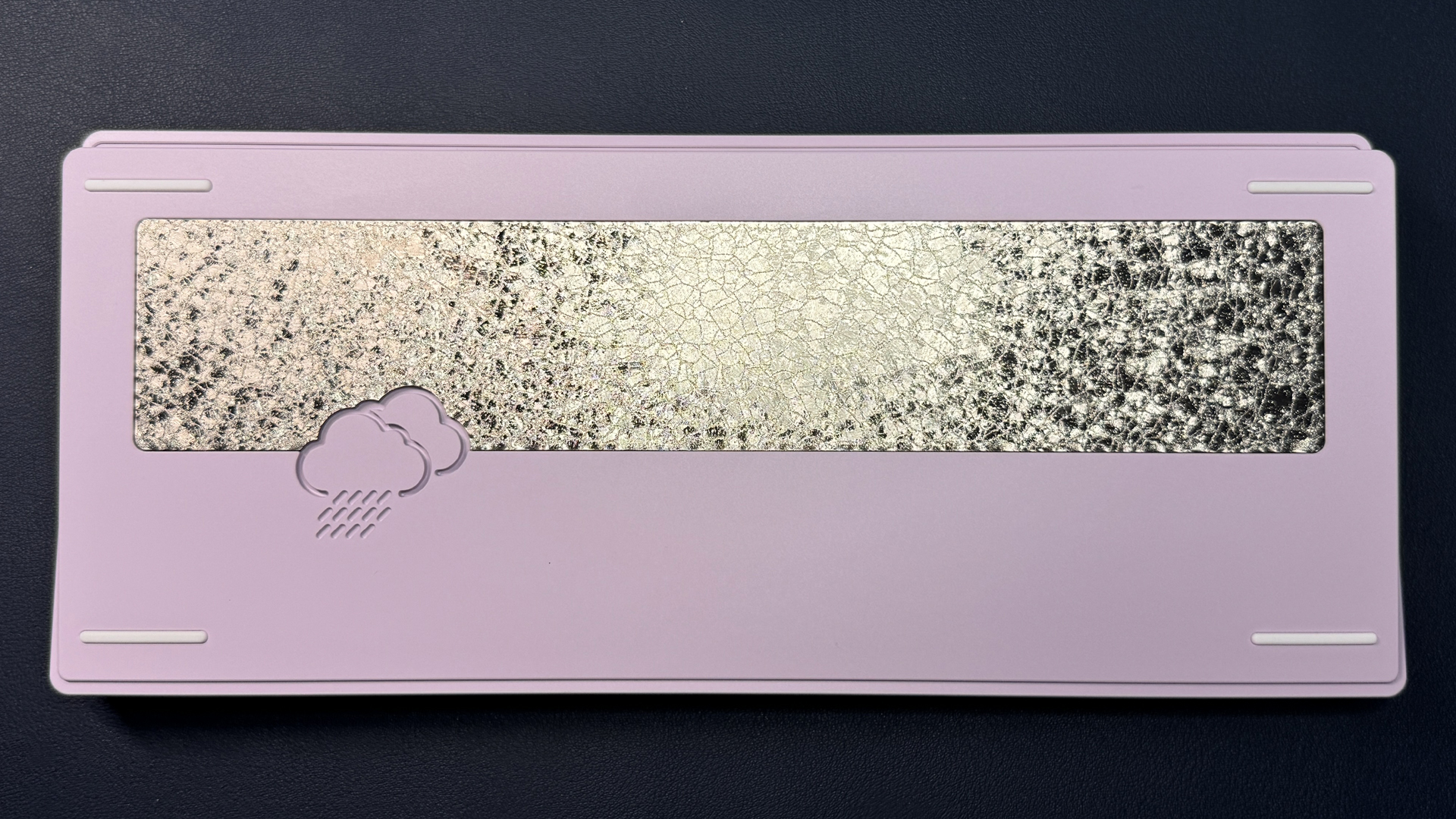
The back of the keyboard features four small rubber strips and a decorative aluminum keyboard weight in a textured finish. It also features an eponymous raincloud engraving (because why not). The back of the keyboard is beautiful, but it's also the back; keep that in mind when you're shopping around. The non-pro version of the keyboard comes with mirrored keyboard weights (in gradient and non-gradient finishes).
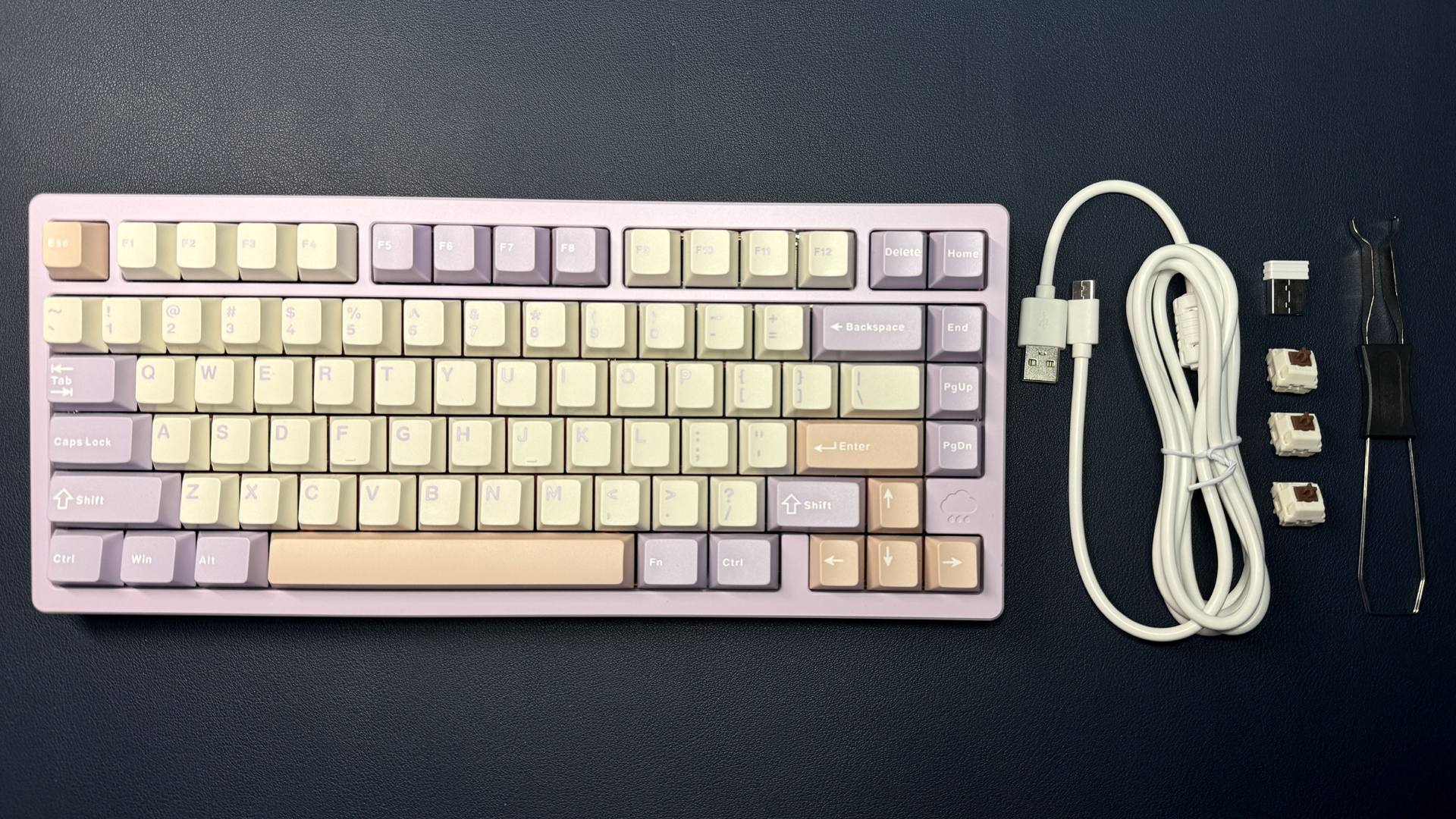
The Rainy 75 Pro comes with a handful of accessories in the box: A 6-foot (1.8m) rubber USB-A to USB-C cable, a 2.4-GHz wireless USB-A dongle, a combination keycap/switch puller, and three extra switches.
Specs
| Size | 75% |
| Number of keys | 81 |
| Switches | Cocoa Linear |
| Backlighting | Yes |
| Onboard Storage | Yes / No |
| Dedicated Media Keys | No |
| Game Mode | No |
| Additional Ports | 0 |
| Connectivity | 2.4GHz wireless, Bluetooth 5.0, wired (USB-C) |
| Cable | 6 ft / 1.8 m USB-C to USB-A |
| Keycaps | Double-shot PBT |
| Construction | Plastic chassis Anodized aluminum top plate |
| Software | QMK / VIA |
| Dimensions (LxWxH) | 14.5 x 5.9 x 1 inches / 320 x 140 x 40 mm |
| Weight | 4.37 pounds / 1,980.5g |
| MSRP / Price at Time of Review | $139 / $139 |
| Release Date | Jan. 2024 |
Typing and Gaming Experience on the Rainy 75 Pro
The Rainy 75 comes in several iterations; we tested the Rainy 75 Pro in Electro Purple with Kailh Cocoa linear switches, which will set you back $139 as configured. The Cocoa switches are linear, factory-lubed switches with an operating force of 45g and a total travel distance of 3.6mm. You can also get the keyboard with Jwick WOB switches (linear, 40g, 3.5mm) or HMX Violet switches (linear, 45g, 3.5mm). The keyboard has a hot-swappable PCB, so you can also swap in your own switches if you don't like any of these linear options.
The Cocoa linear switches are very smooth linear switches, with no tactile bump or audible click. While I'm not the biggest fan of linear switches in general, these switches do sound and feel quite good — they're smooth and consistent-feeling thanks to the factory lube, and they have a deeper, creamier sound than some of the more mainstream linear switches.
I did experience an issue with the keys double-typing certain letters. Swapping out the switches for the keys that were double-typing did seem to clear up the issue — Wobkey includes a few extra switches in the box — but this is the first keyboard I've had an issue with out of the box, and more than one switch needed to be swapped out.
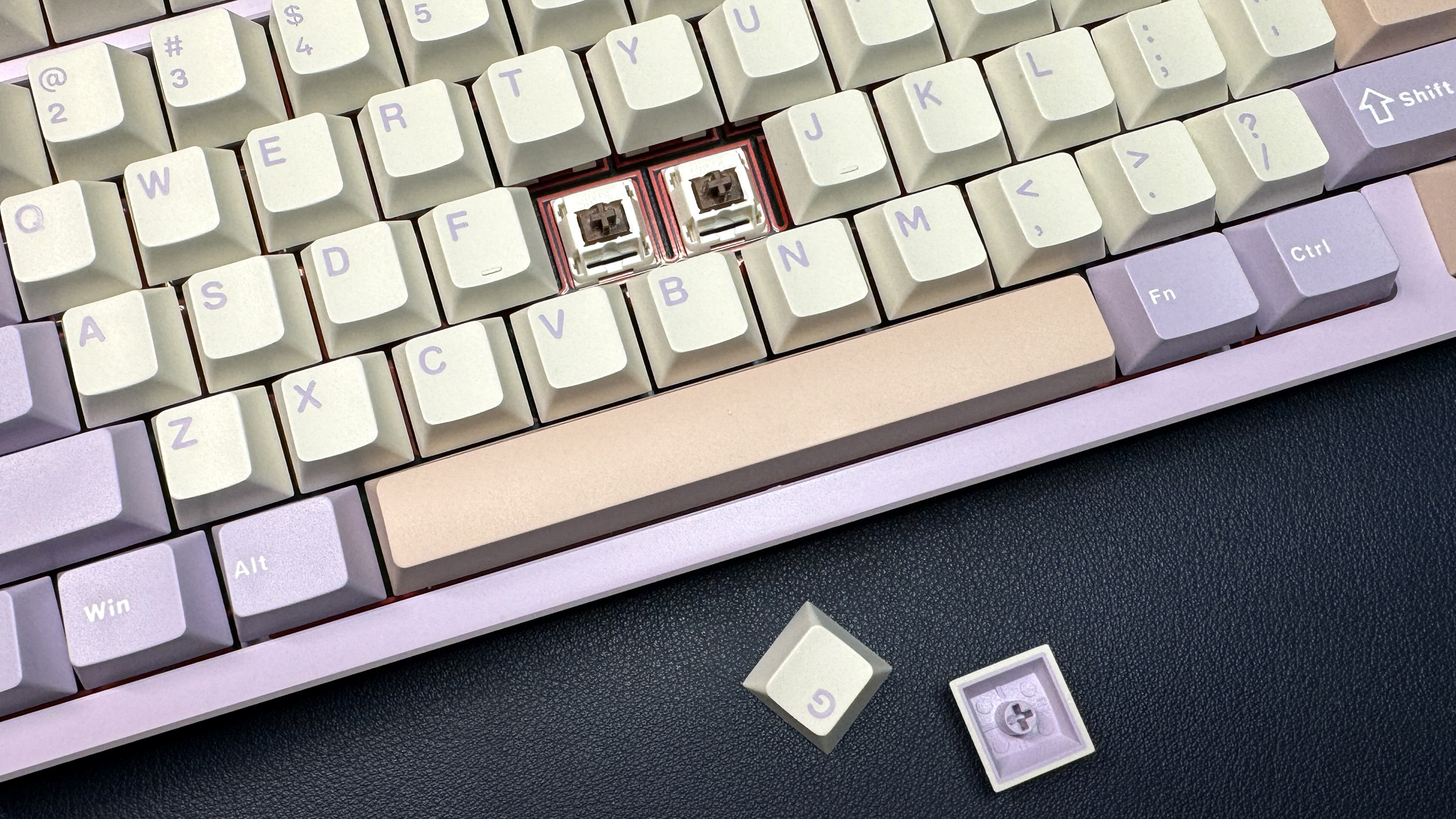
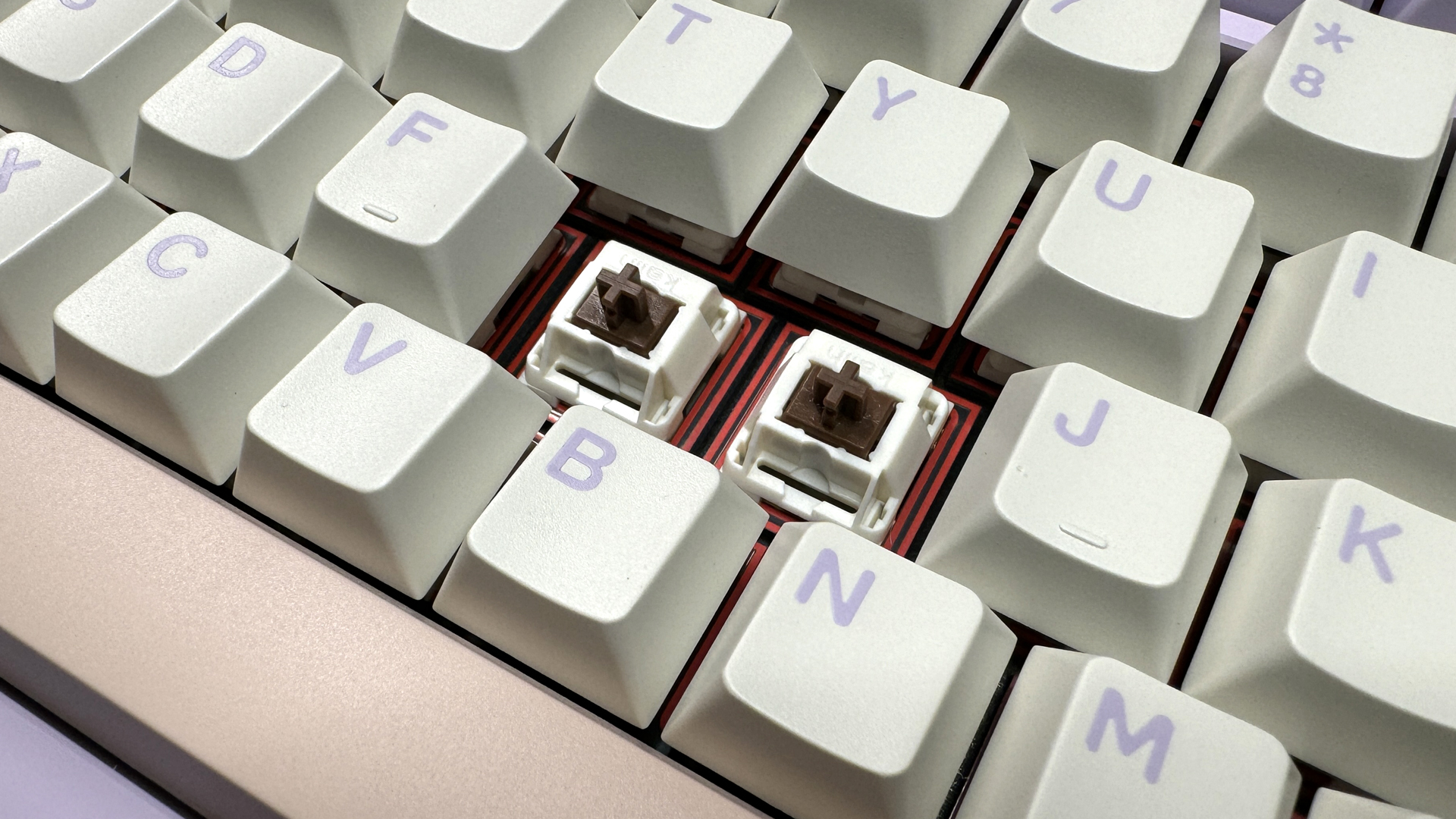
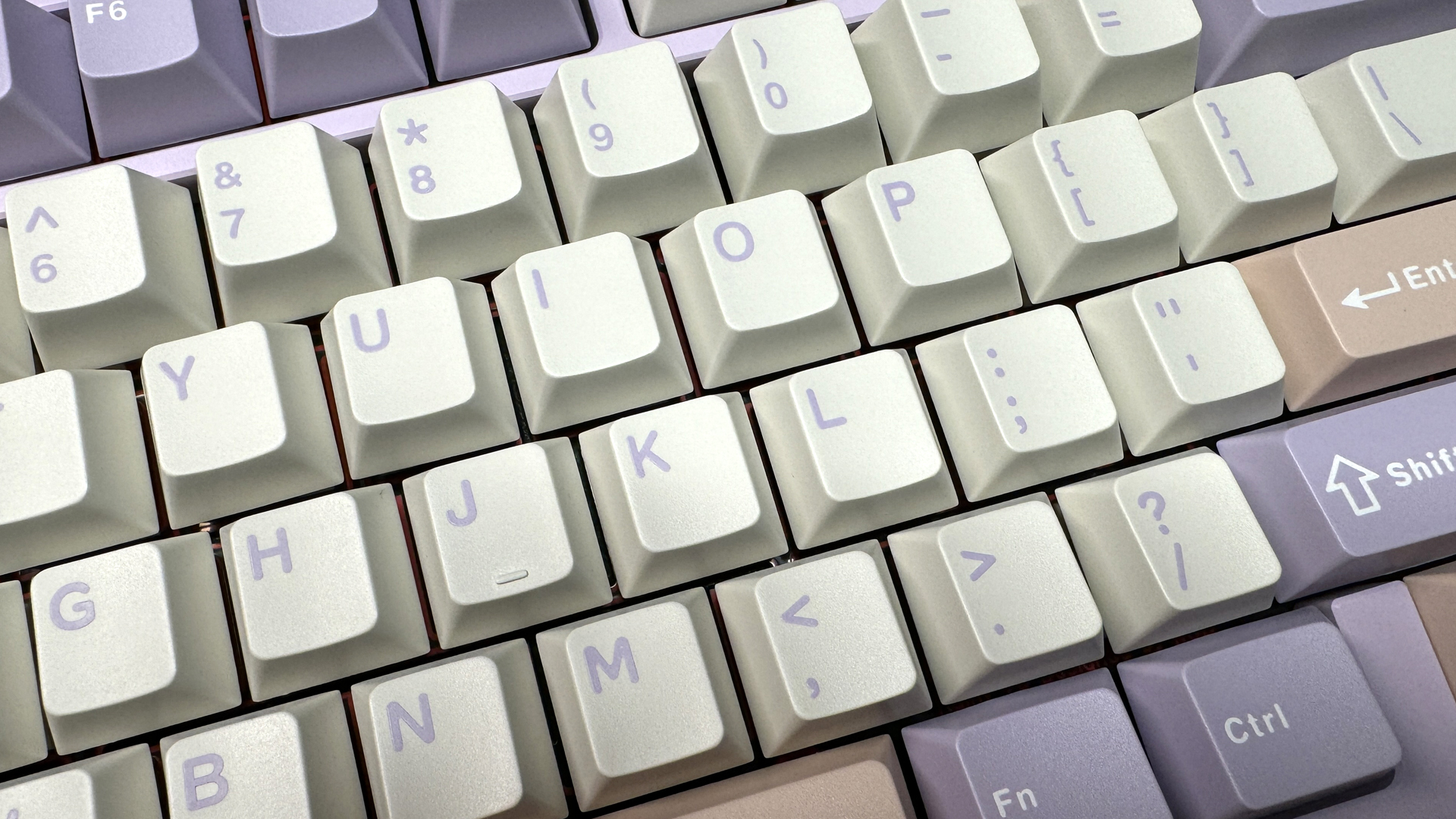
Typing on the Rainy 75 Pro is a fantastic experience, in both feel and sound. This is one of the best-sounding pre-built keyboards I've heard in years, and the sublime sound is even more impressive when you consider the keyboard's price point. The Rainy 75 Pro features five layers of sound-dampening foam and case padding, and this extra attention to deadening case ping is definitely noticeable. Bottoming out with the keyboard's thicker double-shot PBT keycaps makes a satisfyingly stable but lightweight 'thock' — the company claims the keyboard sounds like raindrops when you're typing (hence the name), and I can see it (albeit, very large, heavy raindrops). I did notice a little stabilizer rattle in the larger keys — especially the space bar — but the rest of the keyboard sounded so good that this was hardly a significant drawback.
The keyboard has a gasket mount design and a flexible FR4 PCB, which makes for a comfortable typing experience. The keycaps have a Cherry profile — lower than standard OEM keycaps with sculpted rows and flat tops with a light dip. Thanks to the sound, this is one of the best typing experiences I've had on a linear switch keyboard in a long time, and I didn't have any of the usual issues with accuracy or speed in my typing tests.
This keyboard isn't built for gaming — it has a polling rate of 500 Hz (2ms latency) in wired mode, which will still work for games that don't require top speeds. Wobkey also sells the Rainy 75 HE, which is a magnetic Hall Effect switch version of the Rainy 75. It's pricier, at $179 - $199, but it's built for gaming with magnetic switches and up to an 8,000 Hz polling rate.
Features and Software of the Rainy 75 Pro
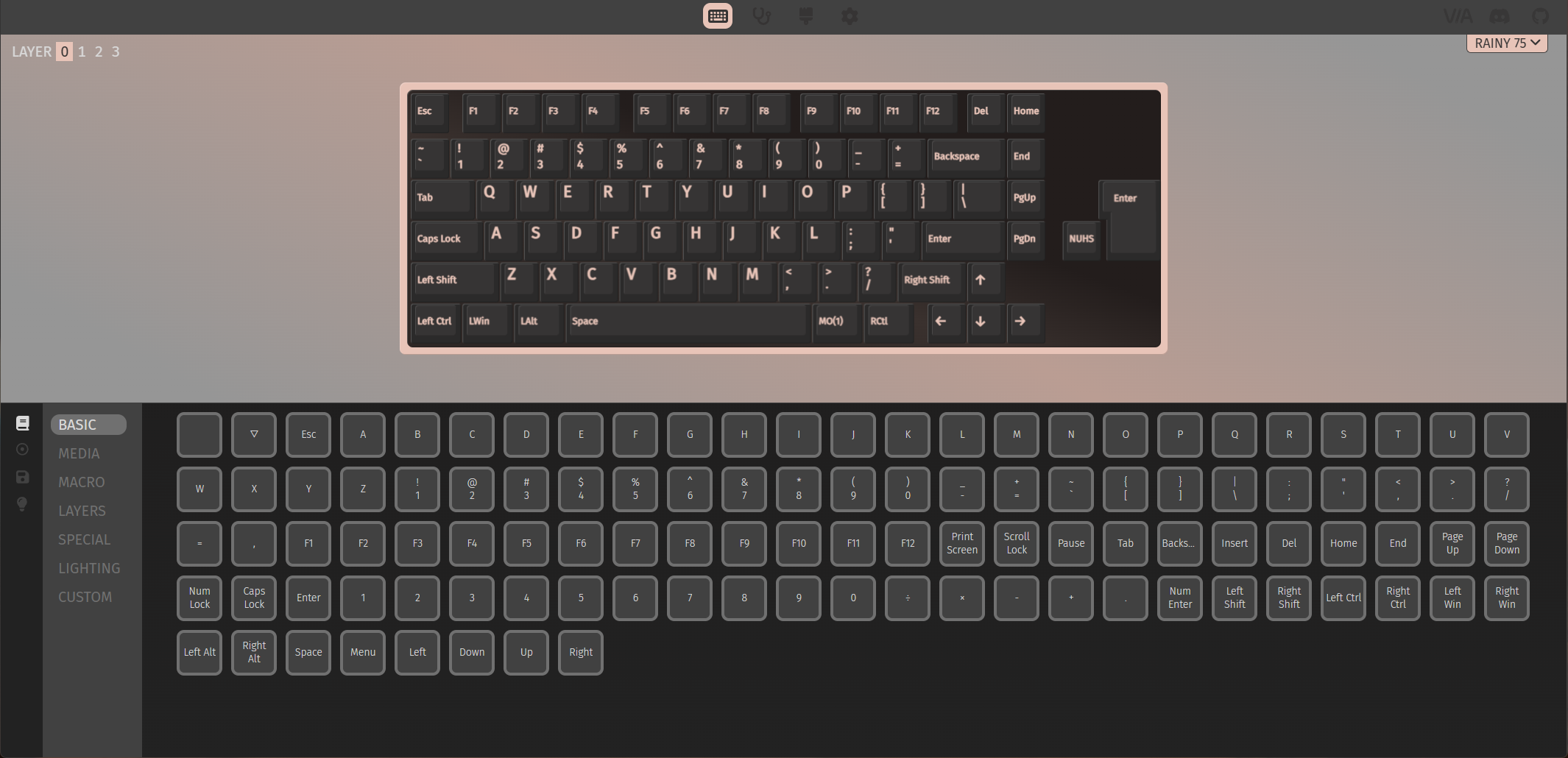
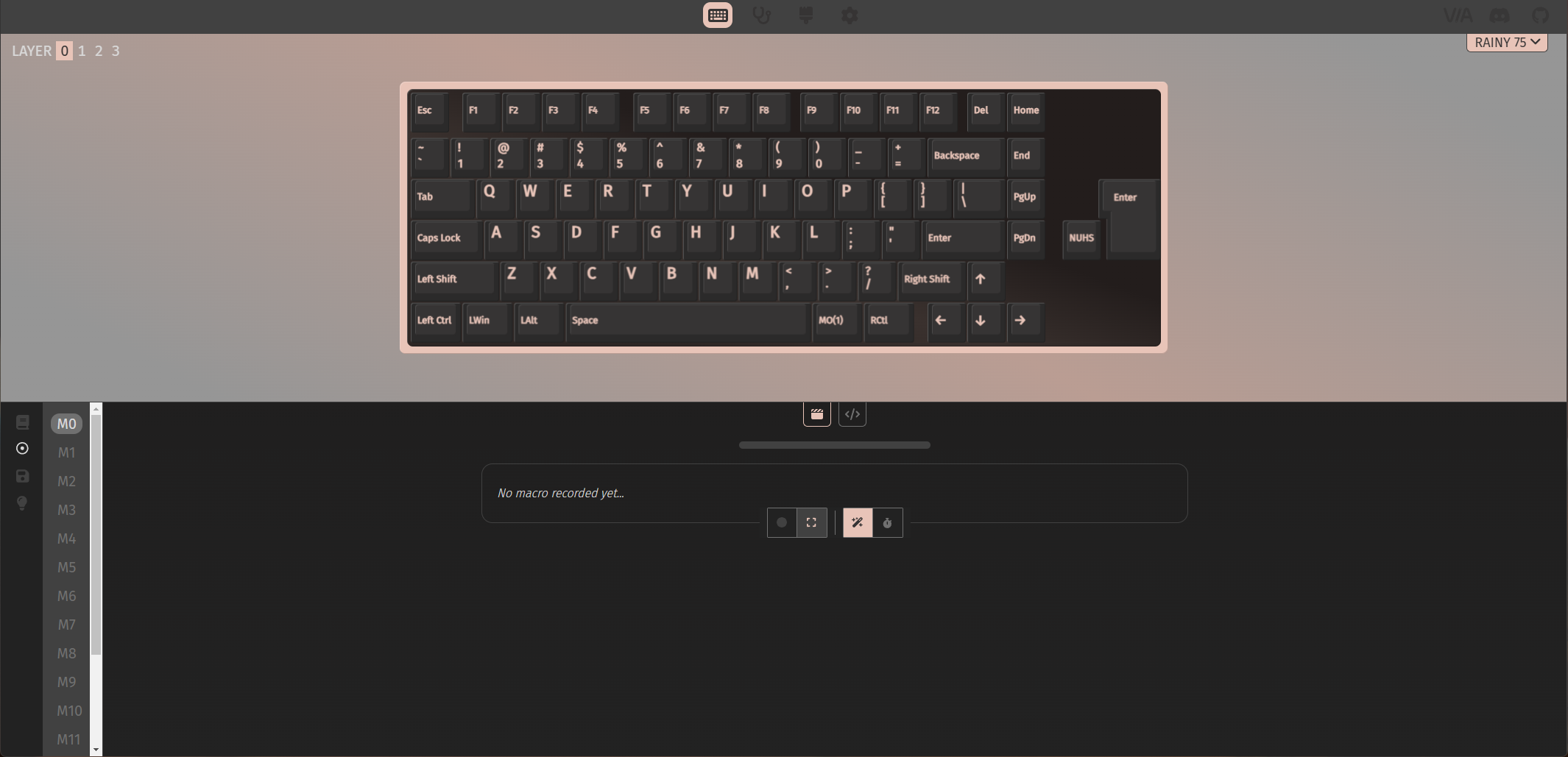
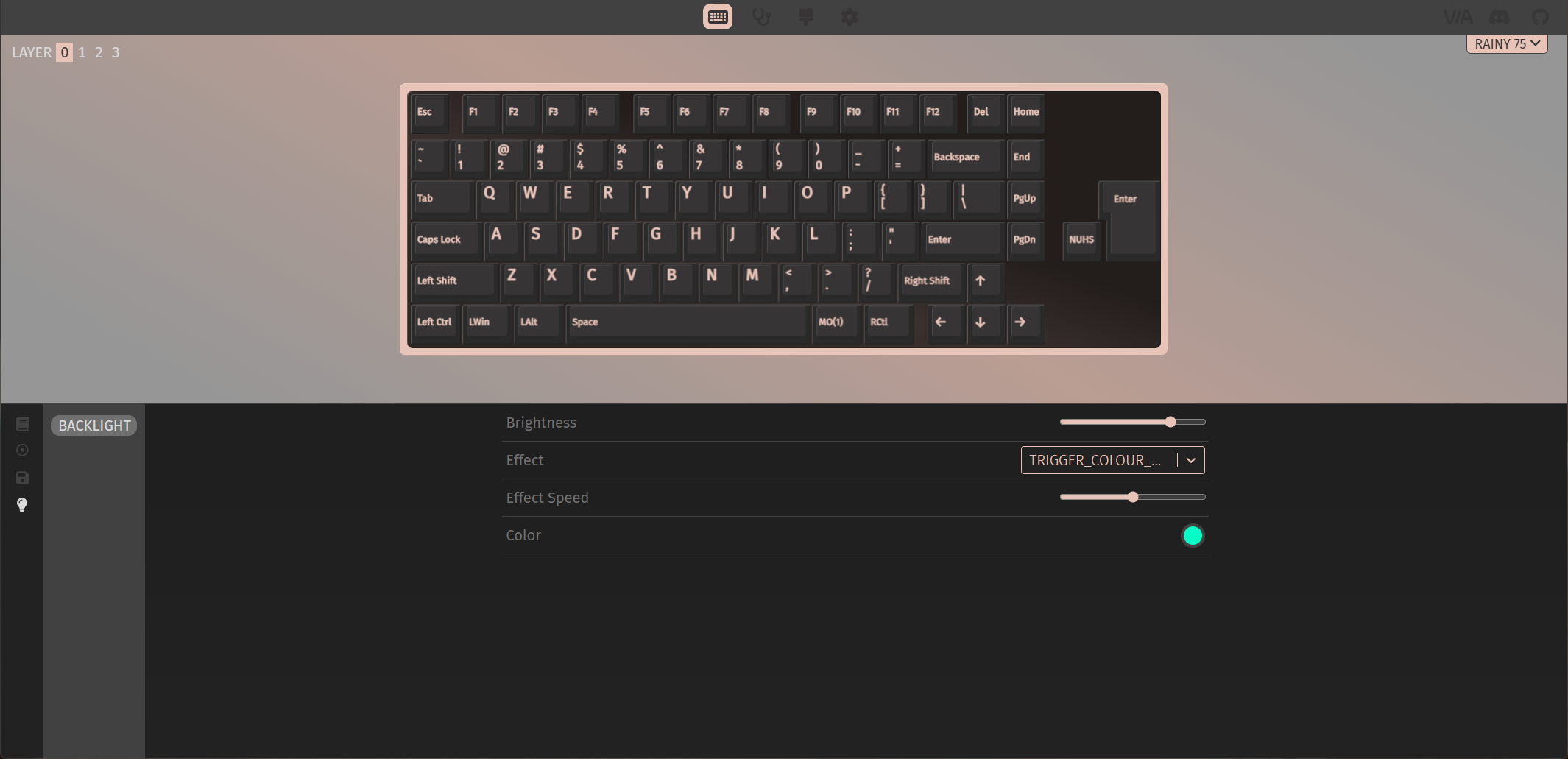
The Rainy 75 Pro is configurable with QMK / VIA, and features different profiles for wired and wireless modes. QMK / VIA is an open source firmware package used for customizing and programming custom keyboards, and is fairly easy to use (you'll need the json files from Wobkey for the Rainy 75 Pro to upload to the VIA design tab). You can use the web-based VIA to remap keys — up to four layers deep — with various functions, shortcuts, and macros, which you can record in the software. You can also tweak the keyboard's RGB lighting, but you'll get the same options you have on the keyboard (you can't customize the lighting per-key, for example).
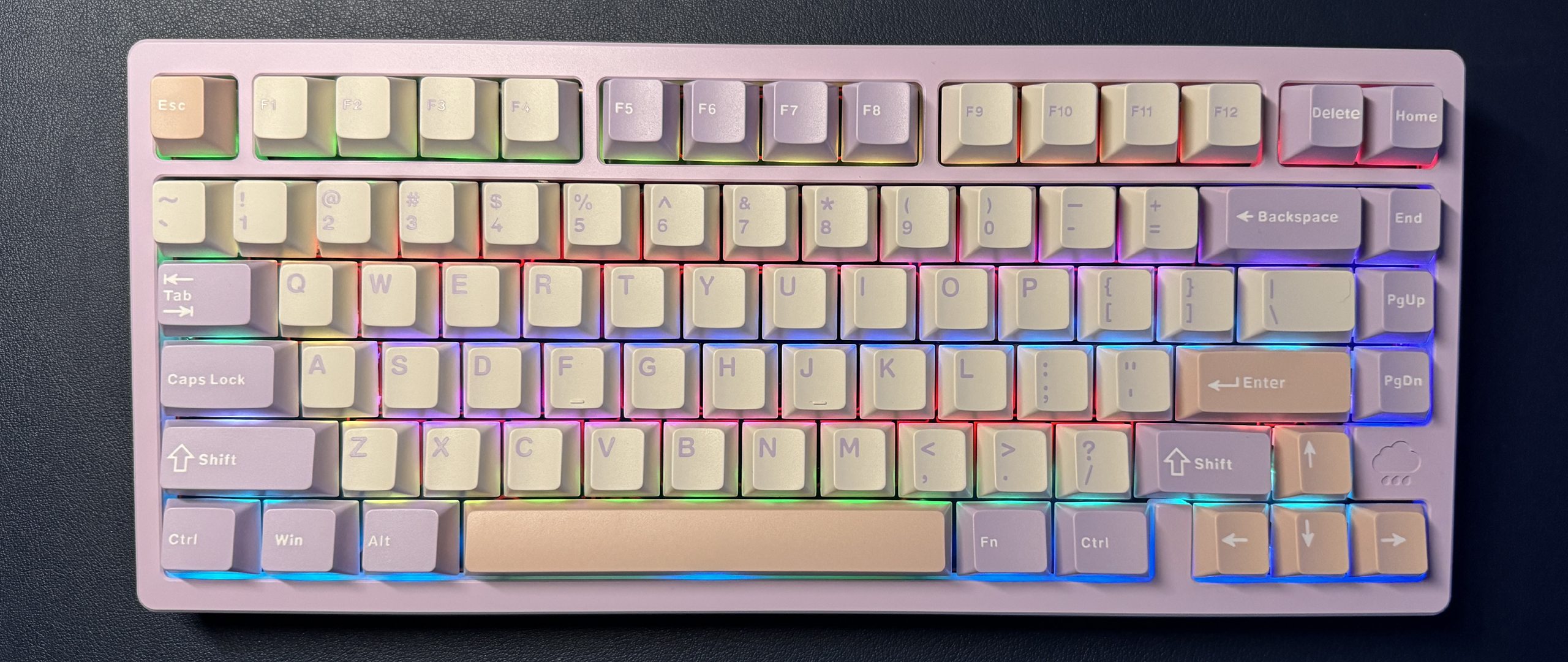
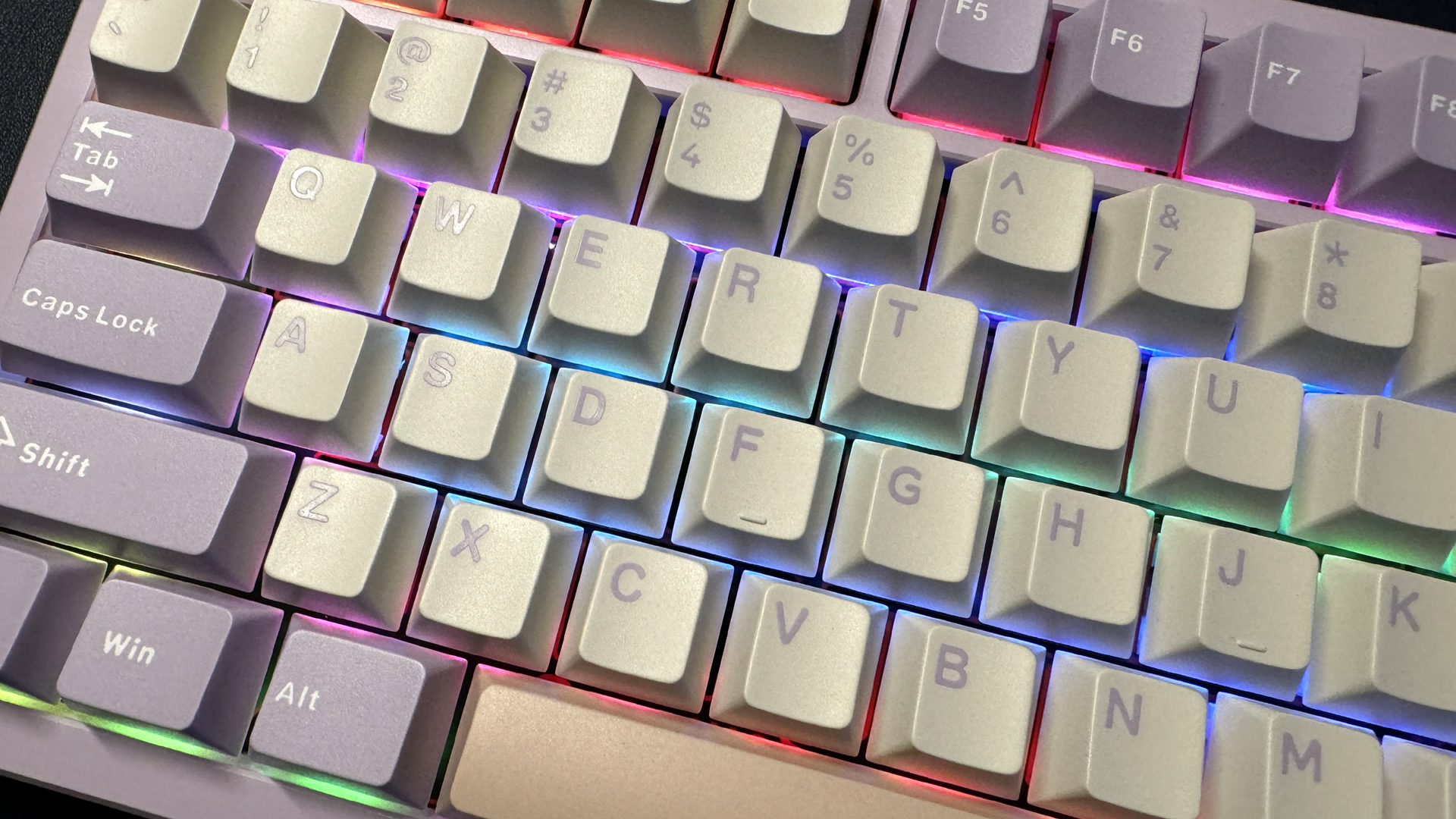
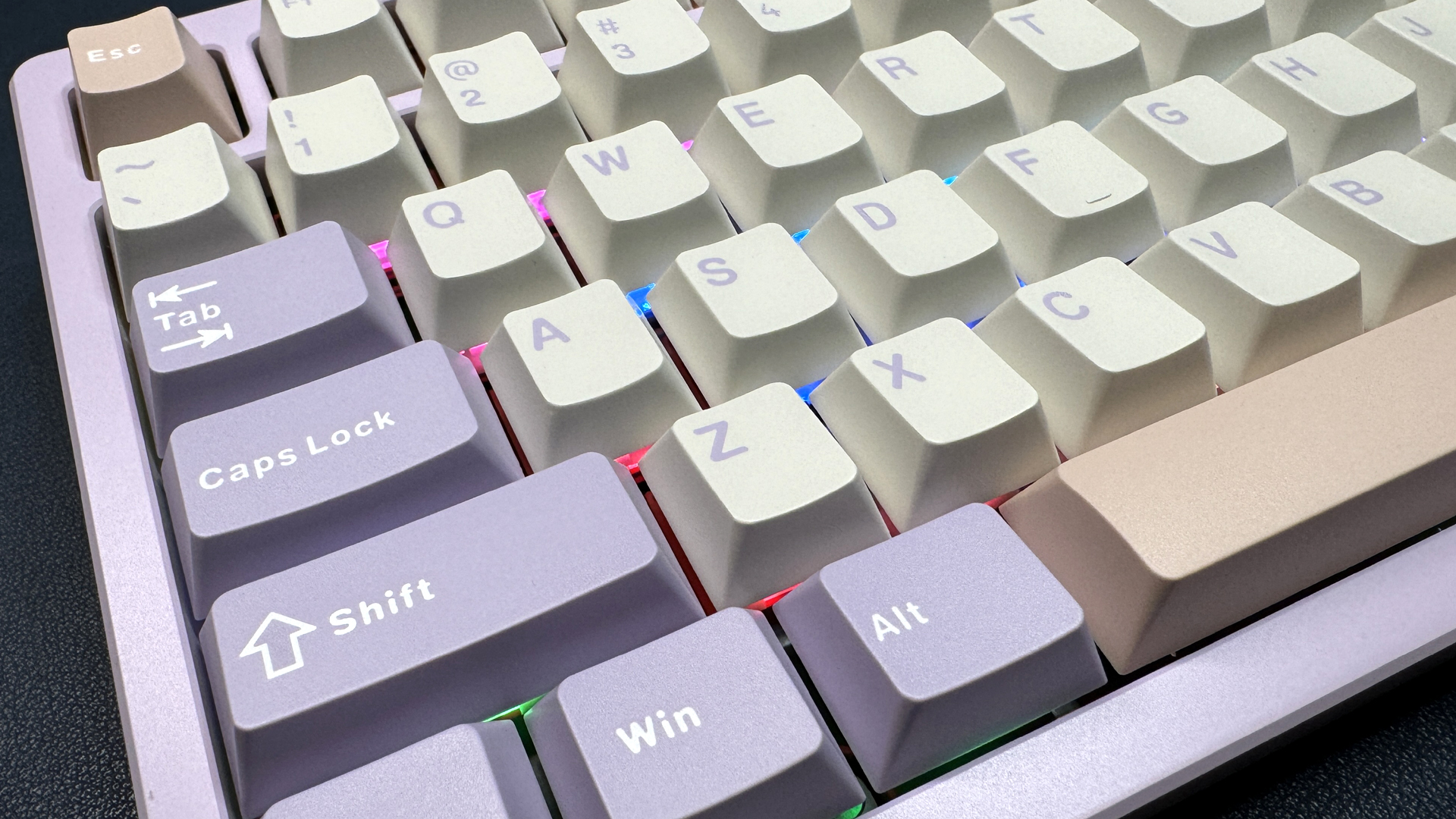
The keyboard features bright RGB backlighting and comes with eighteen pre-set lighting modes that you can cycle through on the keyboard by pressing Fn + \. You can also adjust the lighting brightness (Fn + up/down arrow keys), speed (Fn + left/right arrow keys) and color (Fn + Enter) on the keyboard, and you can turn the lighting on and off by pressing Fn + Backspace. The lighting is nice and bright and looks great despite the lack of shinethrough on the keycaps.
Wireless Experience and Battery Life on the Rainy 75 Pro
Though it doesn't really look like it, the Rainy 75 Pro is a wireless keyboard, with both 2.4-GHz wireless and Bluetooth connectivity. The Pro version has a 7000mAh battery, which is rated for around 900 hours of battery life, presumably with the lighting turned off (the standard wireless version comes with a 3500mAh battery, which is rated for around 450 hours).
To connect wirelessly, you'll first need to turn the keyboard's wireless connection on — the switch is located under the Caps Lock key, so you'll need to take that key off to turn it on (or off). Then you can press Ctrl + Tab to switch between connections (cycles through wired, Bluetooth, and 2.4GHz wireless, if plugged in; or through Bluetooth and 2.4GHz wireless if not). The keyboard can connect to up to three Bluetooth devices at a time, which you can cycle through once you're in Bluetooth mode by pressing Ctrl + F1, F2, or F3.
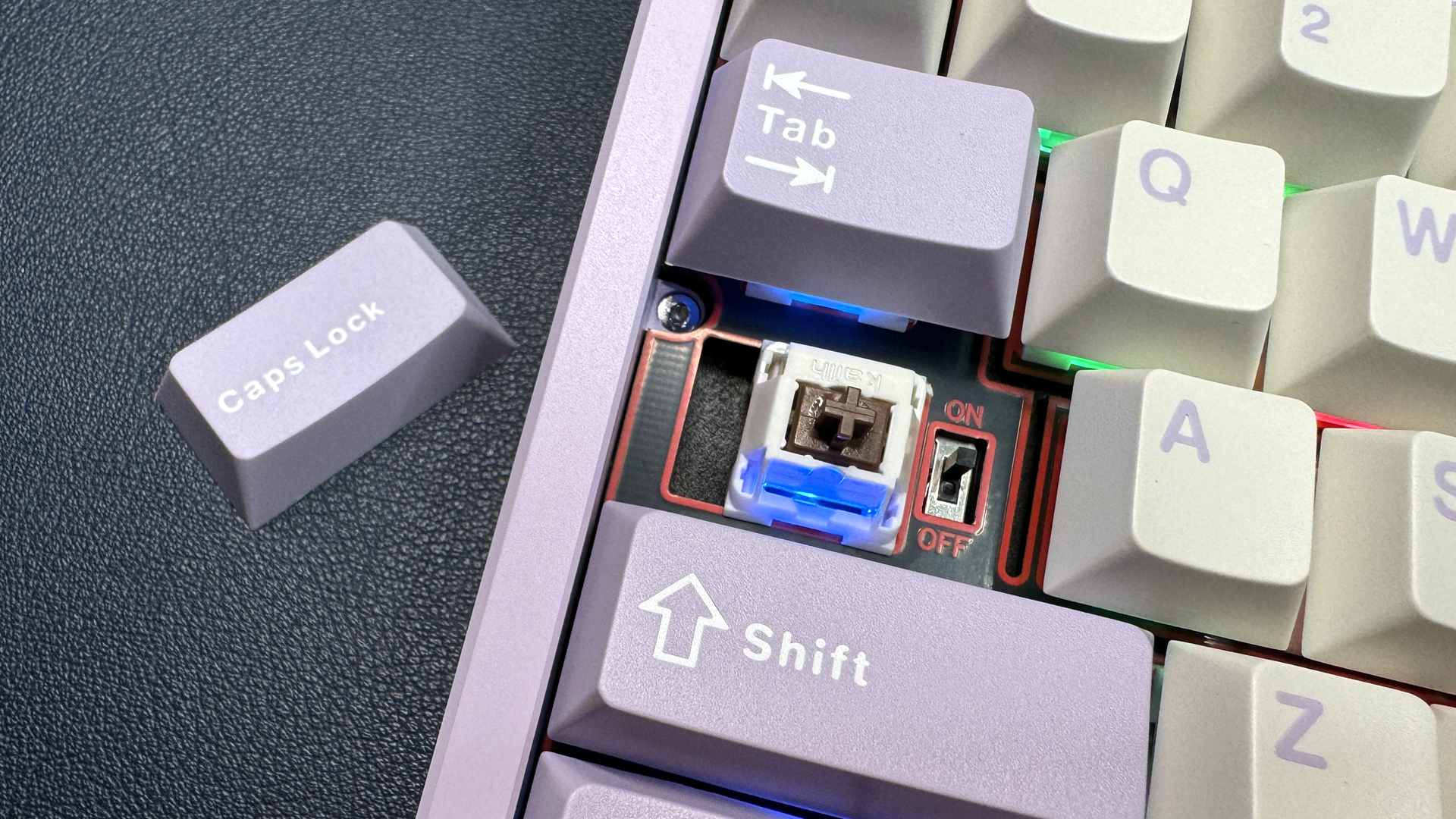
Needless to say, this isn't the most convenient way to toggle the keyboard's wireless connectivity. This might not be a major issue if you plan to leave the keyboard's wireless turned on while it's on your desk, but it's definitely a problem if you're moving the keyboard around (e.g. I kept swapping keyboards, and while I was able to leave the wireless turned on without worrying too much about battery life, I did accidentally hit the keys... constantly) and/or if you just want to be able to switch wireless on and off more often than never.
The Bottom Line
The Wobkey Rainy 75 Pro sounds and feels fantastic, and it's a pretty great buy at $139 for the Pro model. But our review model did have some switch inconsistencies, and the hidden wireless switch was more inconvenient than I anticipated it being, so it's certainly not perfect.
It comes with smooth linear switches but you'll need to swap them out if you're looking for a different feel. And while it will work okay for gaming, it's not really a gaming keyboard — the magnetic switch version is about $50 pricier, which puts it on par with some very good competitors, such as the $175 Arbiter Studio Polar 75 Pro. Still, if you're looking for a fantastic typing experience in a relatively budget-friendly package, this is the keyboard for you.

Sarah Jacobsson Purewal is a senior editor at Tom's Hardware covering peripherals, software, and custom builds. You can find more of her work in PCWorld, Macworld, TechHive, CNET, Gizmodo, Tom's Guide, PC Gamer, Men's Health, Men's Fitness, SHAPE, Cosmopolitan, and just about everywhere else.
